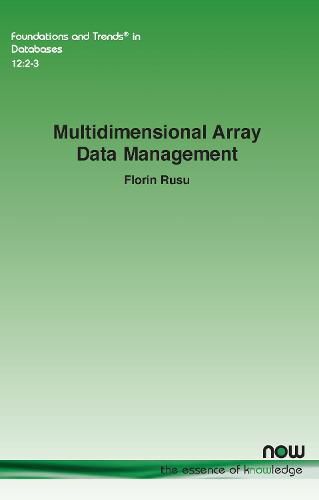Readings Newsletter
Become a Readings Member to make your shopping experience even easier.
Sign in or sign up for free!
You’re not far away from qualifying for FREE standard shipping within Australia
You’ve qualified for FREE standard shipping within Australia
The cart is loading…






This title is printed to order. This book may have been self-published. If so, we cannot guarantee the quality of the content. In the main most books will have gone through the editing process however some may not. We therefore suggest that you be aware of this before ordering this book. If in doubt check either the author or publisher’s details as we are unable to accept any returns unless they are faulty. Please contact us if you have any questions.
Multidimensional arrays are one of the fundamental computing abstractions to represent data across virtually all areas of science and engineering, and beyond. Due to their ubiquity, multidimensional arrays have been studied extensively across many areas of computer science. This survey provides a comprehensive guide for past, present, and future research in array data management from a database perspective. Unlike previous surveys that are limited to raster processing in the context of scientific data, this survey considers all types of arrays: rasters, data cubes, and tensors. The author's goal is to identify and analyze the most important research ideas on arrays and to serve two objectives: first, to summarize the most relevant work on multidimensional array data management by identifying the major research problems; and second, to organize this material to provide an accurate perspective on the state-of-the-art and future directions in array processing.
Multidimensional Array Data Management covers all data management aspects, from array algebras and query languages to storage strategies, execution techniques, and operator implementations. Moreover, the author discusses which research ideas are adopted in real systems and how are they integrated in complete data processing pipelines. Finally, the author compares arrays with the relational data model. The result is a thorough survey on array data management that is an excellent resource for anyone interested in this topic, independent of experience level.
$9.00 standard shipping within Australia
FREE standard shipping within Australia for orders over $100.00
Express & International shipping calculated at checkout
This title is printed to order. This book may have been self-published. If so, we cannot guarantee the quality of the content. In the main most books will have gone through the editing process however some may not. We therefore suggest that you be aware of this before ordering this book. If in doubt check either the author or publisher’s details as we are unable to accept any returns unless they are faulty. Please contact us if you have any questions.
Multidimensional arrays are one of the fundamental computing abstractions to represent data across virtually all areas of science and engineering, and beyond. Due to their ubiquity, multidimensional arrays have been studied extensively across many areas of computer science. This survey provides a comprehensive guide for past, present, and future research in array data management from a database perspective. Unlike previous surveys that are limited to raster processing in the context of scientific data, this survey considers all types of arrays: rasters, data cubes, and tensors. The author's goal is to identify and analyze the most important research ideas on arrays and to serve two objectives: first, to summarize the most relevant work on multidimensional array data management by identifying the major research problems; and second, to organize this material to provide an accurate perspective on the state-of-the-art and future directions in array processing.
Multidimensional Array Data Management covers all data management aspects, from array algebras and query languages to storage strategies, execution techniques, and operator implementations. Moreover, the author discusses which research ideas are adopted in real systems and how are they integrated in complete data processing pipelines. Finally, the author compares arrays with the relational data model. The result is a thorough survey on array data management that is an excellent resource for anyone interested in this topic, independent of experience level.